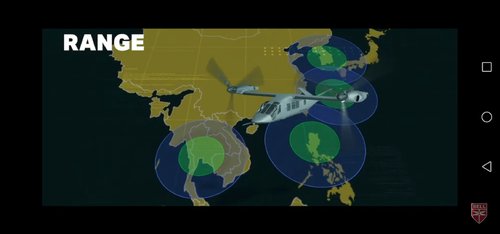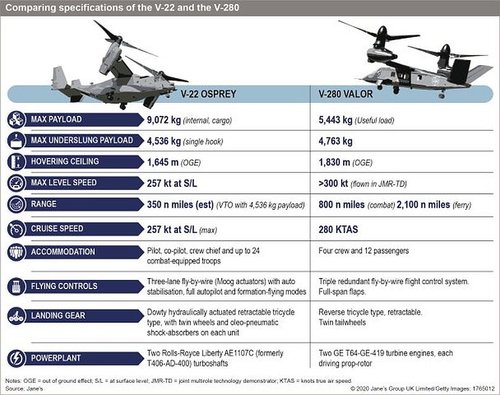The Rakkasans participated in what the U.S. Army Futures Command calls a “Soldier Touchpoint.” Soldier Centered Design is a key element of how Army Futures Command is taking on modernization of the Army. “Soldier feedback early in the design process aids in getting the requirements right and ultimately putting useful capability into the hands of warfighters in the near term, not decades from now,” said Brig. Gen. Walter Rugen, director of the Future Vertical Lift (FVL) Cross-Functional Team (CFT).
As members of the rifle squad conducted ingress and egress drills with their full kit, engineers took copious notes from comments on the cabin configuration, seat layout, restraint harnesses and headrests of the V-280. “The headrests were somewhat of a hindrance when wearing the Kevlar helmet and would most likely be worse if we had our NODs (night optical/observation devices) attached,” commented Sgt. 1st. Class Vuthy Hamm an operations sergeant for the 2-506th Infantry Regiment.[...]
It wasn’t just about assessing the cabin space and seat utility though, there were some advanced technologies the infantrymen were able to try out and provide feedback on. In a partnership with Bell Helicopter, Lockheed Martin developed the Pilotage Distributed Aperture Sensor, or PDAS for short, which allows the inhabitants of the Valor to see 360 degrees through the skin of the aircraft while in flight. Though initially developed for the aircrews, the Army wanted to have the Soldiers don the PDAS prototype goggles to determine the potential application for passengers.
“This would definitely give us an advantage and improve our situational awareness,” Sgt. 1st. Class Hamm said. “We would be able to see terrain features and landmarks on approach to the LZ (landing zone) and have our bearings before exiting the aircraft.”






